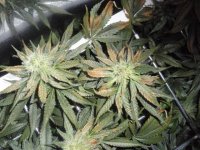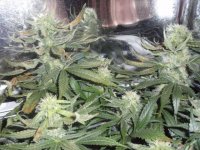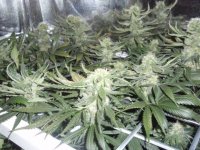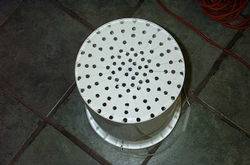hello mistress,
thanks for explaining this system. Do you think it would be possible to do an imaginary sog with wicks on a perlite + vermiculite mix?
or would the roots of the small cutting be to weak to suck water through the wick?
Also, could i use such a system with the gap between plant and watertank being more than 5"? or would the wick be too long for the plant to suck the water?
thx for your input
thanks for explaining this system. Do you think it would be possible to do an imaginary sog with wicks on a perlite + vermiculite mix?
or would the roots of the small cutting be to weak to suck water through the wick?
Also, could i use such a system with the gap between plant and watertank being more than 5"? or would the wick be too long for the plant to suck the water?
thx for your input

 to make clones, even w/out wick. the wick should only make so root zone never dry out.
to make clones, even w/out wick. the wick should only make so root zone never dry out. ...
... in advance for any help you can offer.
in advance for any help you can offer.


 esp if 100% coco... can get water-logged @ middle of root, under-neath root-ball, where gardener dont see if dont check...
esp if 100% coco... can get water-logged @ middle of root, under-neath root-ball, where gardener dont see if dont check...

 . I have been keeping the ppm of the reservoir at a fairly steady level instead. This is how we learn...right?
. I have been keeping the ppm of the reservoir at a fairly steady level instead. This is how we learn...right?


 ...
...

